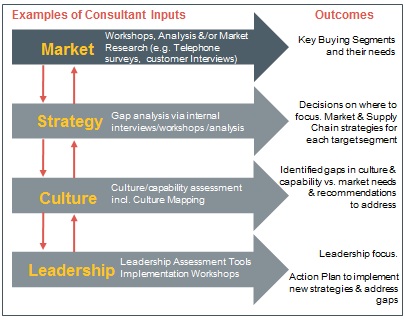|
It is now widely accepted that business performance is optimised when the strategy and internal capability of the organisation is ‘aligned’ with the marketplace in which it operates. The Qantas decision to develop a new operation (Jetstar) to target the low-cost segment; McDonald’s development of their McCafe concept; and the decision to maintain both the Westpac and St George brand and branch network in the Australian market, are all strategies essentially aimed at alignment with particular parts of a broader market.
The Dynamic Alignment approach provides innovative methods to define the core drivers in different parts of the market, and to design strategies to reflect the needs of these different segments along with the internal capability to deliver those strategies.
Most businesses think about and segment customers based on demographics, or geography or industry - but none of these help understand what drives customers - and what they will respond to! Behavioural segmentation is used, even for business to business customers, to provide clarity around the real needs and drivers in the market.
Support can be provided at various levels – from simply helping organisations to understand and interpret their markets more fully (always the starting point), to helping them to develop market-focused strategies and to build internal alignment across the business, as shown below.
- Clarity and focus in strategy development
- A means to improve customer satisfaction, and ultimately revenue, through improved alignment with customers’ key drivers
- A basis to allocate resources and improve margins – improving service while reducing costs associated with non-valued over-servicing
- A way to reduce the time and resources allocated to exception management
- A framework to target innovation - by addressing customer’s real needs.
| 

